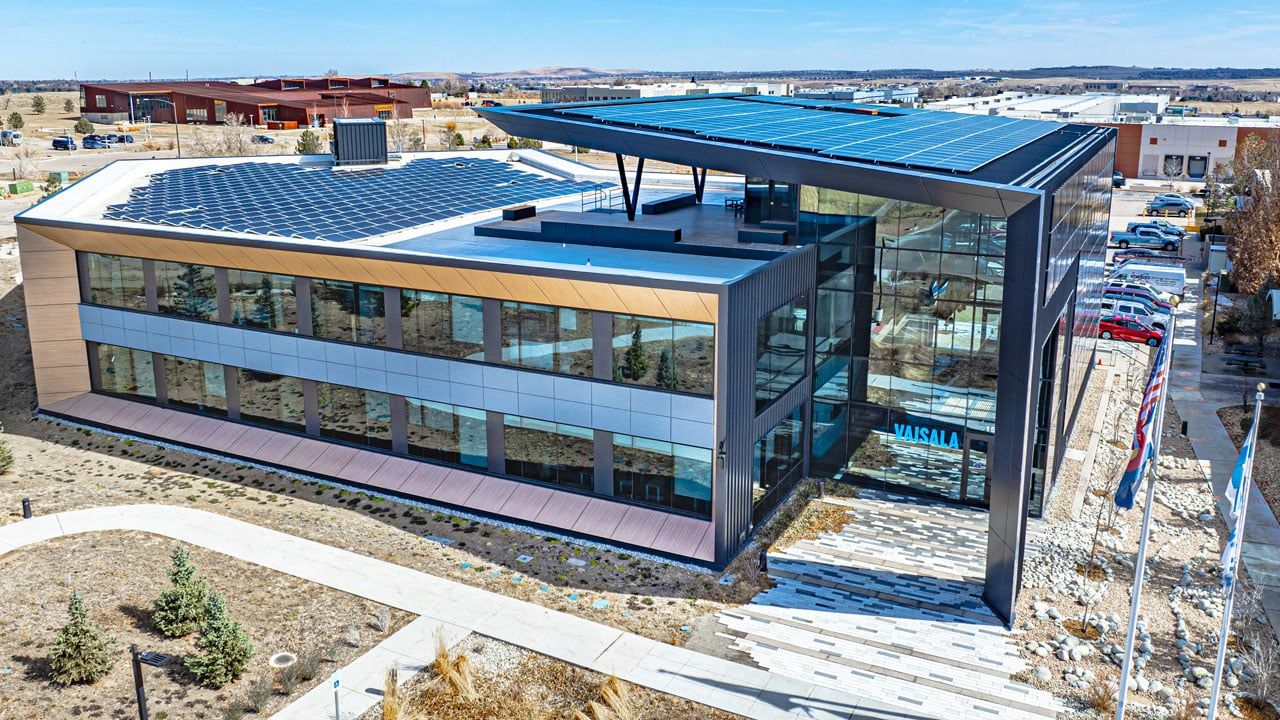Kodak pursues huge film-making project
Editor’s note: With this issue, the Business Report begins a year-long series on “Engines of the Economy,” a look at the region’s larger employers.
WINDSOR – The picture appears to be improving at the Eastman Kodak Co. film-making plant here.
After hitting its peak employment of 3,200 20 years ago, the flagship operation of the Kodak Colorado Division is once again on the upswing, focusing on increases in capacity, the pursuit of a $250 million project and a program to bring it closer to its customers.
SPONSORED CONTENT
Commercial Solar is a big investment, but not an overwhelming one
Solar offers a significant economic benefit for commercial property owners while also positively impacting the environment and offering a path to compliance for new municipal requirements like Energize Denver. A local, experienced solar installer will help you navigate the complexities of commercial solar to achieve financial success for your project.
The $250 million venture would produce film materials used in quick-print machines stationed at retailers and allow shutterbugs to turn their negatives or positives into print enlargements in a matter of minutes. It’s a chemical-free process.
“There’s additional capacity in the world” for those products, said John Saurer, general manager and vice president of Kodak Colorado. He’s competing with nine other plants in Kodak’s Sensitized Goods Manufacturing group for the job.
For it to happen here, Saurer acknowledges, state government officials will likely have to hold out substantial economic incentives.
Such a project would only endear Kodak further in Northern Colorado’s economy.
The prospect is good news for Northern Colorado, whose teeth show when Kodak smiles.
Here is a snapshot of what Kodak contributes to the area economy:
n A payroll for its 2,722 employees of $107 million a year. About 2,400 of those workers toil at the Windsor operation; the others staff sales offices in Denver and Englewood.
n Local property taxes amounting to $6 million, a tax bill that’s been on the rise.
n Purchases of $40 million from Colorado companies, including $2.5 million from minority businesses. The more successful Kodak is, the more it buys from other businesses.
n A high-volume flow of dollars to charitable organizations. Last year, Kodak’s philanthropy weighed in at $222,000.
The figures all appear to have upward momentum.
“I’m pretty bullish on this site,” Saurer said. “Business looks pretty good for us right now.”
The Kodak plant’s future hasn’t always looked so rosy, thanks to a two-decade onslaught of competition from Japan’s Fuji film company and molasses-like reaction from Big Yellow’s corporate headquarters in Rochester, N.Y.
The Windsor facility peaked early, running its employment rolls up to 3,200 in 1975, when profit margins on a roll of film were huge. Ever since, the plant has striven to cut costs and become more efficient.
Those efforts became pronounced in the last few years, as officials in Rochester sought to radically restructure the $14 billion-a-year company. Just last month, chief executive officer George M.C. Fisher shook up the executive suite in Rochester, pushing out officers resistant to change and promoting those who embrace it.
“I feel pretty darn good about the company now,” Saurer, a 29-year Kodak veteran, said. “I wouldn’t have said that two or three years ago.”
Without fanfare, Kodak has hired about 100 new employees there over the past nine months, converting provisional workers to permanent status.
And early next year, the plant expects to bring on line a project valued at nearly $50 million that will double its capacity to make aluminum printing plates, one of its staple photographic products.
That’s expected to directly add “in the tens” of workers, Saurer said, but ultimately may mean as many as 100 new people to handle the extra volume in related departments.
For years, the plant’s presence has rippled prosperity throughout the business community.
Greeley’s Hensel Phelps Construction Co., for example, built Kodak’s original facility on the 600-acre tract it now occupies, and it continues to perform construction on Kodak’s various capital projects.
But in a variety of other areas, suppliers and vendors also count on Kodak for business.
Sonoco Products Co., based in Hartsville, S.C., built its plant in Berthoud 18 years ago primarily to supply Kodak in Windsor. The company makes fiber tubes that Kodak uses to wrap its color paper around.
“It’s a strong relationship,´ said Rebecca Douglas, Sonoco’s account representative handling Kodak. “And it’s not just local. It’s global. Sonoco is a global supplier for Kodak.”
DeLine Box Co. has spent the last couple of decades trucking packaging materials to Kodak.
Ken DeLine, president of DeLine Box, credits Kodak with opening the door to total quality management at his company.
Editor’s note: With this issue, the Business Report begins a year-long series on “Engines of the Economy,” a look at the region’s larger employers.
WINDSOR – The picture appears to be improving at the Eastman Kodak Co. film-making plant here.
After hitting its peak employment of 3,200 20 years ago, the flagship operation of the Kodak Colorado Division is once again on the upswing, focusing on increases in capacity, the pursuit of a $250 million project and a program to bring it closer to its customers.
The $250 million venture would produce film materials used in quick-print machines stationed at retailers and allow…
THIS ARTICLE IS FOR SUBSCRIBERS ONLY
Continue reading for less than $3 per week!
Get a month of award-winning local business news, trends and insights
Access award-winning content today!

